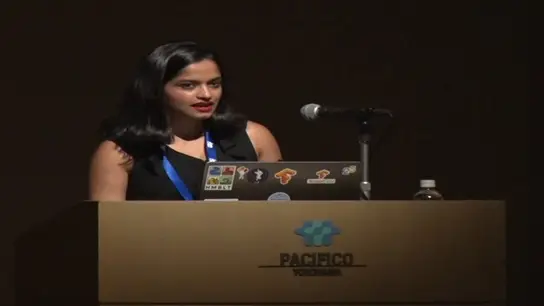Tutorials: Evolutionary Continuous Dynamic Optimization
Danial Yazdani and Xin Yao
-
Members: FreeCIS
IEEE Members: Free
Non-members: FreeLength: 01:39:15
06 Dec 2021
Change is an inescapable aspect of natural and artifcial systems, and adaptation is central to their resilience [1]. Optimization problems are no exception to this maxim. Indeed, viability of businesses and their operational success depends heavily on their e?ectiveness in responding to a change in the myriad of optimization problems they entail. For an optimization problem, this boils down to the eficiency of an algorithm to maintain a quality solution to an ever changing problem. Ubiquity of dynamic optimization problems demands extensive research into design and development of algorithms capable of dealing with various types of change [2].
Inspired by biological evolution and natural self-organized systems, evolutionary algorithms and swarm intelligence methods have been vastly used for optimizing dynamic optimization problems due to their natural capability in dealing with environmental changes [3]. Indeed, both classes have been successfully applied to dynamic optimization problems with various environmental and dynamic characteristics [2,4]. However, one cannot directly apply them to tackle dynamic optimization problems as these methods are originally designed for optimization in static environments and cannot cope with the challenges of a dynamic optimization problem alone. Hence, they are usually used together with some other components to form evolutionary dynamic optimization methods.
This Tutorial is dedicated to exploring the recent advances in the field of evolutionary continuous dynamic optimization.This tutorial first describes the definition of dynamic optimization problems and explains different classes of these problems [5, 6]. Then, components of evolutionary continuous dynamic optimization methods [7] are described. This is followed by describing the state-of-the-art and well-known used benchmarks in the field. This tutorial also introduces the commonly used performance indicators that have been used for analyzing and comparing the performance of the algorithms. After introducing several real-world applications, the tutorial is concluded by discussing some of the current challenges, the gap between academic research and real-world problems, and some potential future research directions.
Learning Outcomes. This tutorial is suitable for anyone with an interest in evolutionary computation who wishes to learn more about the state-of-the-art in continuous dynamic optimization problems. The tutorial is specifically targeted for Ph.D. students, and early career researchers who want to gain an overview of the field and wish to identify the most important open questions and challenges in the field to bootstrap their research in continuous dynamic optimization problems. The tutorial can also be of interest to more experienced researchers as well as practitioners who wish to get a glimpse of the latest developments in the field. In addition to our prime goal which is to inform and educate, we also wish to use this tutorial as a forum for exchanging ideas between researchers. Overall, this tutorial provides a unique opportunity to showcase the latest developments on this hot research topic to the EC research community. The level of this tutorial is introductory and its expected duration is two hours.
Inspired by biological evolution and natural self-organized systems, evolutionary algorithms and swarm intelligence methods have been vastly used for optimizing dynamic optimization problems due to their natural capability in dealing with environmental changes [3]. Indeed, both classes have been successfully applied to dynamic optimization problems with various environmental and dynamic characteristics [2,4]. However, one cannot directly apply them to tackle dynamic optimization problems as these methods are originally designed for optimization in static environments and cannot cope with the challenges of a dynamic optimization problem alone. Hence, they are usually used together with some other components to form evolutionary dynamic optimization methods.
This Tutorial is dedicated to exploring the recent advances in the field of evolutionary continuous dynamic optimization.This tutorial first describes the definition of dynamic optimization problems and explains different classes of these problems [5, 6]. Then, components of evolutionary continuous dynamic optimization methods [7] are described. This is followed by describing the state-of-the-art and well-known used benchmarks in the field. This tutorial also introduces the commonly used performance indicators that have been used for analyzing and comparing the performance of the algorithms. After introducing several real-world applications, the tutorial is concluded by discussing some of the current challenges, the gap between academic research and real-world problems, and some potential future research directions.
Learning Outcomes. This tutorial is suitable for anyone with an interest in evolutionary computation who wishes to learn more about the state-of-the-art in continuous dynamic optimization problems. The tutorial is specifically targeted for Ph.D. students, and early career researchers who want to gain an overview of the field and wish to identify the most important open questions and challenges in the field to bootstrap their research in continuous dynamic optimization problems. The tutorial can also be of interest to more experienced researchers as well as practitioners who wish to get a glimpse of the latest developments in the field. In addition to our prime goal which is to inform and educate, we also wish to use this tutorial as a forum for exchanging ideas between researchers. Overall, this tutorial provides a unique opportunity to showcase the latest developments on this hot research topic to the EC research community. The level of this tutorial is introductory and its expected duration is two hours.


